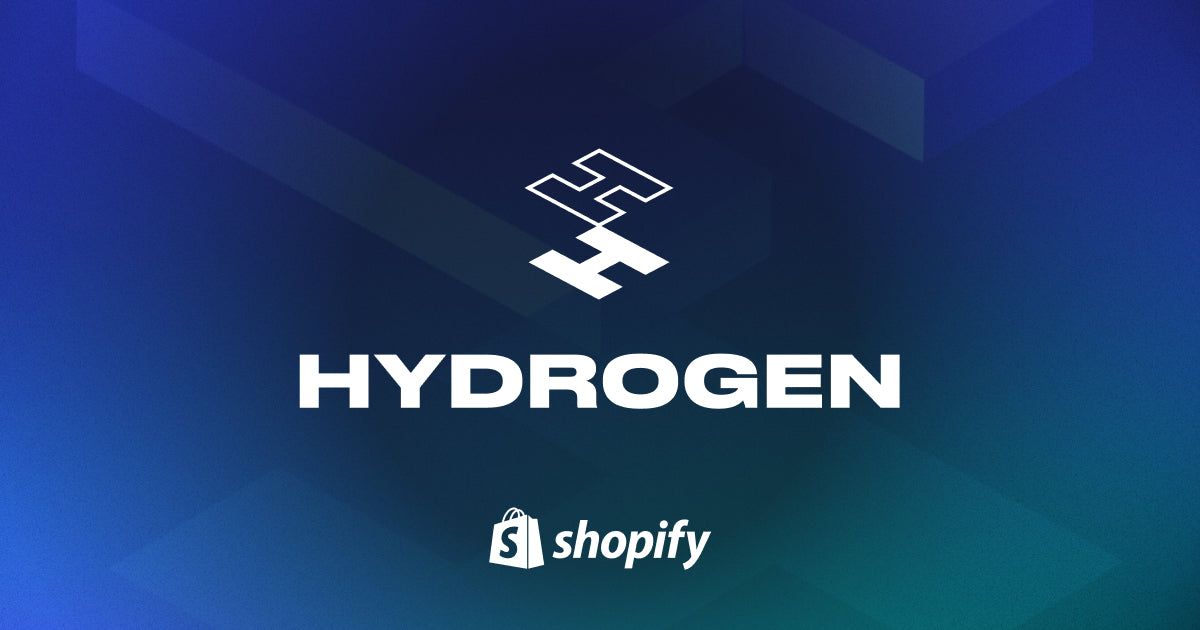Why Shopify Hydrogen is the Ultimate Tool for Blazing-Fast Online Stores

Let’s face it: the e-commerce world moves at warp speed. Customers expect pages to load before they finish blinking. If your store lags, they’ll vanish faster than a TikTok trend. That’s where Shopify Hydrogen swoops in—not just as another tool, but as the secret weapon for store owners who refuse to settle for good enough.
Let’s break it down, step by step.
1. Shopify: The Undisputed King of E-Commerce (But Even Kings Evolve)
Shopify has long been the go-to platform for entrepreneurs. It’s like the Swiss Army knife of online selling—user-friendly, packed with apps, and perfect for scaling. But here’s the catch: traditional Shopify stores rely on Liquid, their templating language. While Liquid works, it’s like driving a dependable sedan when you could be cruising in a turbocharged sports car.
Enter Shopify Hydrogen.
2. What Exactly Is Shopify Hydrogen?
Hydrogen isn’t just an update—it’s a revolution. Think of it as Shopify’s answer to the modern web’s hunger for speed and flexibility. Built on React, Hydrogen is a headless commerce framework. Translation: it decouples your store’s frontend (what customers see) from the backend (your Shopify admin).
This isn’t just tech jargon. Headless commerce means you can design your store like a bespoke suit—tailored to fit your brand perfectly, without being shackled to pre-built themes.
3. The Hydrogen Advantage: Why Your Store Needs This
Let’s cut to the chase. Here’s what Hydrogen does better than almost anything else:
A. Speed That Feels Like Sorcery
Hydrogen uses server-side rendering (SSR). Instead of waiting for browsers to load every element (like traditional Liquid stores), Hydrogen serves up fully rendered pages from the server. Result? Pages load in milliseconds. One brand saw bounce rates drop by 40% after switching—because nobody sticks around for a slow store.
B. SEO on Steroids
Google loves fast, well-structured sites. Hydrogen’s SSR doesn’t just please humans—it hands search engines a perfectly optimized page. Pair this with dynamic meta tags and structured data, and you’ve got a recipe for topping search rankings.
C. Customization Without Limits
One of the biggest limitations of traditional Shopify themes is their lack of flexibility. While they’re great for beginners, they can feel restrictive for businesses with unique needs.
Hydrogen changes the game. Since it’s a headless framework, you have complete control over the front-end. Want to create a one-of-a-kind product page? Or integrate a custom checkout experience? With Hydrogen, the possibilities are endless.
D. Scalability That Grows With You
Black Friday traffic spikes? No sweat. Hydrogen, paired with Shopify Oxygen (its hosting platform), scales effortlessly. It’s like having a digital bouncer that never lets your site crash—no matter how many customers pile in.
4. Hydrogen vs. Liquid: The Showdown
Let’s break it down into clear, bite-sized points for each—Hydrogen and Liquid—so you can see exactly what they bring to the table.
Shopify Hydrogen: The Future of E-Commerce
- Speed: Built for lightning-fast performance with server-side rendering (SSR). Pages load in milliseconds, keeping customers hooked.
- Customization: Offers full creative freedom with React. Design your store exactly how you want—no theme limitations.
- SEO: Comes with built-in SEO optimization, making it easier to rank higher on Google.
- Developer Skill: Requires knowledge of React/JavaScript. Perfect for developers or teams ready to dive into advanced customization.
- Scalability: Designed to handle massive traffic spikes, making it ideal for growing or high-volume stores.
- Use Case: Best for brands looking to push boundaries, deliver unique experiences, and future-proof their stores.
Shopify Liquid: The Reliable Classic
- Speed: Decent, but heavily dependent on themes and apps. Can slow down with too many plugins.
- Customization: Limited to what themes and apps allow. Great for beginners but restrictive for advanced needs.
- SEO: Good, but often requires additional apps or tweaks to optimize fully.
- Developer Skill: Beginner-friendly. No coding knowledge is needed for basic setups.
- Scalability: Handles moderate traffic well but can struggle during massive spikes (like Black Friday).
- Use Case: Perfect for small to medium-sized stores or entrepreneurs just starting out.
5. The Reality Check: Hydrogen’s Downsides
Hydrogen isn’t magic fairy dust. A few caveats:
- Learning Curve: You’ll need React developers (or time to learn it). No drag-and-drop simplicity here.
- Cost: Custom development and Oxygen hosting add up. But hey—you’re investing in revenue growth, not just expenses.
- Overkill for Small Stores: If you’re running a niche store with 10 products, Hydrogen might be a Ferrari in a school zone.
6. The Bottom Line: Is Hydrogen Worth It?
If you’re aiming to:
- Outpace competitors with a buttery-smooth site,
- Own SEO rankings like a pro,
- Future-proof your store for Web3 trends (think AR shopping, PWAs),
…then Hydrogen isn’t just worth it—it’s essential.
Final Thoughts: The Future is Fast (or It’s Nothing)
Shopify Hydrogen isn’t a trend—it’s the future of e-commerce. Yes, it demands more upfront work. But in a world where 53% of mobile users abandon sites that take longer than 3 seconds to load, can you afford to stick with the status quo?
The choice is simple: keep up with Liquid, or leap ahead with Hydrogen. Your customers (and your revenue) will thank you.
Ready to shift gears? Start with Shopify’s Hydrogen Dev Docs or partner with us who speaks React fluently. The fast lane is waiting. 🚀